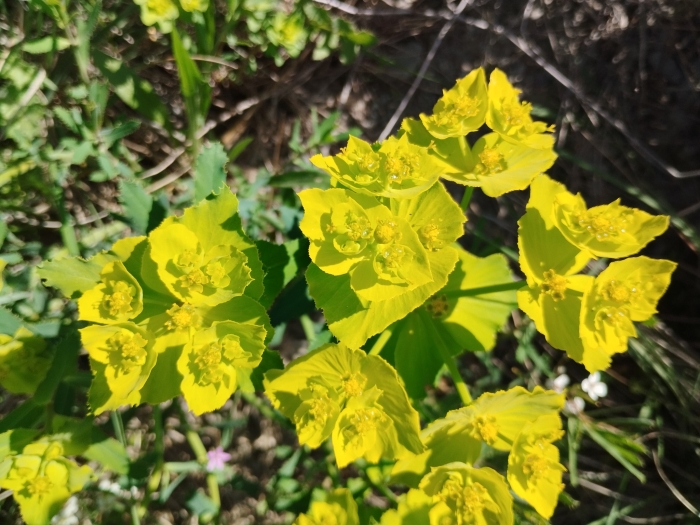Serrated Spurge
(Euphorbia serrata)
Serrated Spurge (Euphorbia serrata)
/
/

Josep Gesti
CC BY-SA 4.0
Image By:
Josep Gesti
Recorded By:
Copyright:
CC BY-SA 4.0
Copyright Notice:
Photo by: Josep Gesti | License Type: CC BY-SA 4.0 | License URL: http://creativecommons.org/licenses/by-sa/4.0/ | Rights Holder: Josep Gesti | Publisher: iNaturalist | Date Created: 2024-04-13T12:10:41-07:00 |

























Estimated Native Range
Summary
Euphorbia serrata, commonly known as serrated spurge or sawtooth spurge, is a perennial herb native to a variety of habitats including grasslands, open woodlands, and roadsides across Europe. It has a modest growth habit, typically reaching 8 inches to 1.5 feet in height. The plant has a distinctive appearance with long, narrow leaves along the stem and more oval-shaped leaves at the tips. The foliage is finely toothed, adding to its serrated look. Euphorbia serrata blooms with small, inconspicuous flowers clustered in inflorescences at the branch ends. The flowering season extends through the warmer months, although the flowers are not particularly showy.
In cultivation, serrated spurge is valued for its unique foliage texture and is used in rock gardens, borders, and as a ground cover. It thrives in full sun to part shade and prefers well-drained soils, tolerating a range of soil types. This plant is drought-tolerant once established, making it a low-maintenance option for xeriscaping. However, gardeners should be cautious as Euphorbia serrata contains a milky sap that can be irritating to the skin and eyes. It is also potentially invasive outside its native range, so it is important to check local regulations before planting.CC BY-SA 4.0
In cultivation, serrated spurge is valued for its unique foliage texture and is used in rock gardens, borders, and as a ground cover. It thrives in full sun to part shade and prefers well-drained soils, tolerating a range of soil types. This plant is drought-tolerant once established, making it a low-maintenance option for xeriscaping. However, gardeners should be cautious as Euphorbia serrata contains a milky sap that can be irritating to the skin and eyes. It is also potentially invasive outside its native range, so it is important to check local regulations before planting.CC BY-SA 4.0
Plant Description
- Plant Type: Herb
- Height: 1.5-2.5 feet
- Width: 1-1.5 feet
- Growth Rate: Moderate
- Flower Color: Green
- Flowering Season: Summer
- Leaf Retention: Semi-deciduous
Growth Requirements
- Sun: Full Sun, Part Shade
- Water: Low
- Drainage: Medium, Fast
Common Uses
Drought Tolerant, Low Maintenance
Natural Habitat
Native to a variety of habitats including grasslands, open woodlands, and roadsides across Europe
Other Names
Common Names: Serrated Spurge, Prickly Spurge, Saw-Tooth Spurge, Toothed Spurge
Scientific Names: , Euphorbia serrata, Chylogala serrata, Esula serrata, Euphorbia serrata f. phylloclada, Euphorbia serrata f. subacaulis, Euphorbia serrata f. ternata, Euphorbia serrata var. foliosa, Euphorbia serrata var. longepedicellata, Euphorbia serrata var. phylloclada
GBIF Accepted Name: